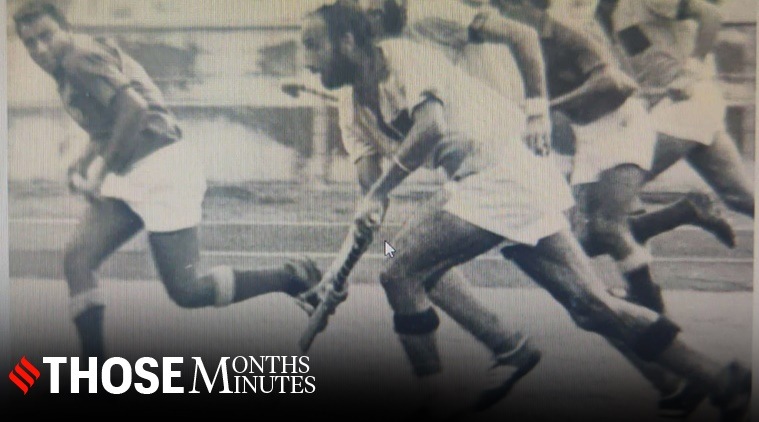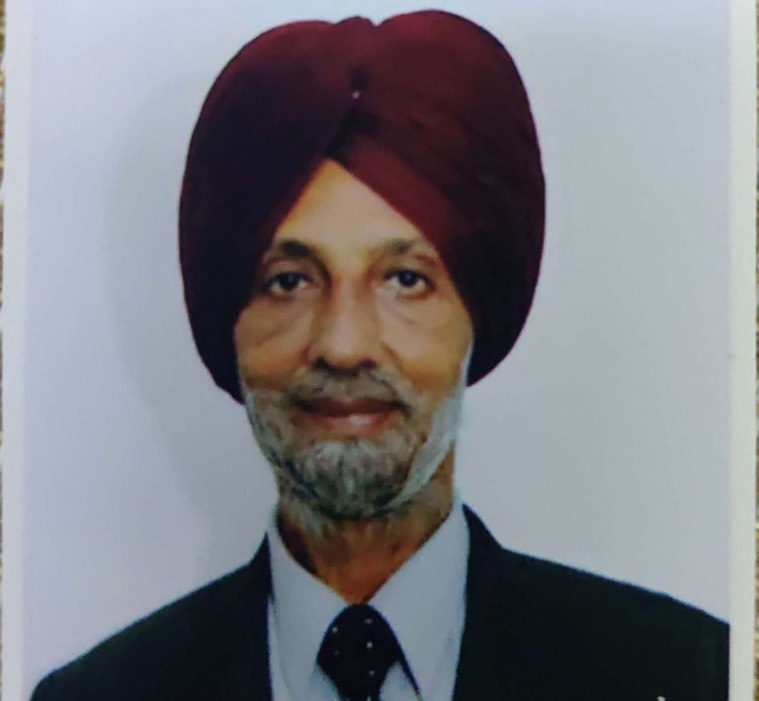 Former center-forward Harbinder Singh is one of the links with the golden period in India’s national game. (Image source: Harbinder Singh)
Former center-forward Harbinder Singh is one of the links with the golden period in India’s national game. (Image source: Harbinder Singh)
India was supposed to start its four-month countdown to the Olympics this moment. But forced into an unprecedented, grim lockdown as the world battles the Covid-19 outbreak, sport is staring at unfathomable despair. Indian athletes though have given the country reasons to rejoice in the past. The Indian Express looks back at a bunch of these memories in ‘Those Months, Those Minutes’.
——————————————————————————————————————————-
Harbinder Singh is a few months short of 77, but ask him anything about his career and Indian hockey in general, and there’s no hint of a fading memory. “It’s probably the only aspect where my recollections are still sharp,” the three-time Olympian says. With a gold medal and two bronze in his possession from his efforts at Tokyo 1964, Mexico City 1968 and Munich 1972, the former center-forward is one of the links with the golden period in India’s national game.
Time for redemption
The gold at the 1964 Olympics was India’s seventh in the sport but, more significantly, came four years after being pipped in the final by neighbours Pakistan in Rome. It was a shock for a country used to dominating all comers on the grass, and everyone in the Indian hockey fraternity wanted to put the record straight in Tokyo. No chances could be taken.
Recalls Harbinder: “There was a lot of pressure after the defeat in 1960. There was so much passion for the sport in the country and nothing less than gold was acceptable. More so, because Pakistan had also beaten India in the 1962 Jakarta Asian Games final.”
Lead-up to the Olympics
January 1964: The national championships were held at their fixed time, at the beginning of the calendar year. The venue was Delhi’s Lady Hardinge Ground (later renamed Shivaji Stadium).
“The place looked very different in those days. There were just a few steps and no galleries. There used to be a clock tower near it and two hockey fields, The bus stand came up much later,” Harbinder informs.
“There were hardly any facilities for spectators, but in those days, numbers in the range of 15,000-20,000 were common for the national championships. Some of them even climbed trees for a better view.”

The Indian team, those days, was largely made up of players from three domestic sides – Railways, Services and Punjab. Harbinder played a pivotal role in Railways emerging triumphant, beating Services in the final.
“All the top players in the country used to be in action at the Nationals, and that edition gained even more significance with the Olympics on the horizon. As many as 77 players were shortlisted for a month-long training camp in Jalandhar,” he remembers.
Fight for spots
The standard of Indian hockey at that time was such that, according to Harbinder, there used to be five players of almost equal quality for every position.
“We used to play positional hockey those days and it was very tough for the selectors to prune the numbers. The initial group of 77 was first reduced to 55 and then 36. The final squad of 18 was to be decided after a three-day selection trial, but such was the competition that it had to go into the fourth day before the touring party was finalised.”
Preparatory tours
 The Olympics were in October, and the time at hand was utilised with preparatory tours to New Zealand and Malaysia. “The first match was played on a muddy field in Auckland. It was almost an akhara. We lost 2-1 and the local media went to town about it, proclaiming that New Zealand were now going to win the Olympic gold medal. The reality check came soon enough when we beat them 5-2 in Christchurch in the next game and 8-2 in the third one at Wellington,” Harbinder chuckles.
The Olympics were in October, and the time at hand was utilised with preparatory tours to New Zealand and Malaysia. “The first match was played on a muddy field in Auckland. It was almost an akhara. We lost 2-1 and the local media went to town about it, proclaiming that New Zealand were now going to win the Olympic gold medal. The reality check came soon enough when we beat them 5-2 in Christchurch in the next game and 8-2 in the third one at Wellington,” Harbinder chuckles.
“Now their papers were saying that India were the favourites for the gold.”
The three weeks in New Zealand were followed by one in Malaysia, and when the squad then landed in Tokyo – Harbinder’s maiden Olympics – they were ready for the challenge.
Problems to start with
“We used to have neither proper tracksuits nor hockey shoes. We were given football boots that were hardly fit for the purpose. Luckily, when we landed in Tokyo, Adidas provided us the required kits,” he says.
India were in an eight-team pool and started with a 2-0 win over Belgium followed by 1-1 draws against Germany and Spain. But wins over Hong Kong, Malaysia, Canada (“it was a water-logged field”) and the Netherlands ensured that India topped the group, pipping the Spaniards by a point.
“We defeated Australia 3-1 in the semifinals in rain and made it through to the final against Pakistan.” The arch-rivals lined up for the finals after remaining undefeated throughout their group campaign.
“Rough game”
October 23, 1964
India-Pakistan hockey encounters are said to be displays of free-flowing, attacking style, in contrast to the tactical methods employed by European teams. But that’s not how Harbinder remembers these matches.
“Relations between the two teams were not very cordial. We were not on talking terms. Against India, Pakistan usually employed a very rough game. That’s what happened in the 1962 Asian Games final. Those days, there were no television cameras and video referrals, and it was very difficult for the umpires to spot all the fouls and infringements.”
The Tokyo Olympics final at Komaza Park also started along the same lines. “After a few minutes of rough play, the umpire had had enough. He lined up both the teams and read the riot act. ‘Gentlemen, I only have the red card in my pocket now. So, please behave yourselves’.”
It seemed to have the desired effect and it became a clean game thereafter.
Prophecy that came true
The match remained goalless until half time. And thereafter, a prophecy almost miraculously came true.
Harbinder recalls: “Mohinder Lal was my roommate. We both worked for Northern Railways. On the morning of the final, he told me that he had a premonition that India would get a penalty stroke in the match. He was the designated penalty stroke-taker and said that if it came to that, he would hit it towards the roof of the goal as the Pakistan goalkeeper Abdul Hamid was short in height. As it turned out, India earned a penalty corner five minutes after the break. Prithipal Singh’s hit struck Munir Dar’s foot on the goal line and a penalty stroke was awarded. Mohinder stepped up. He had already decided where to hit it and the custodian had no chance.”
However, the match was not over. As the minutes passed by, Pakistan stepped up their attacks. Towards the end, they were awarded a penalty corner and India’s goalkeeper Shankar Lakshman rose to the challenge.

“Munir Dar was their designated penalty corner hitter. He took a fierce shot, which Shankar parried and even managed to save the rebound,” Harbinder looks back.
Just a few minutes later, the Indian players were doing impromptu celebratory bhangra. It was a campaign to remember for Harbinder, personally, as well as he had contributed five field goals.
Heroes’ welcome
The reception on the team’s return to India is still etched in Harbinder’s mind. “It was a much smaller airport at Palam in Delhi then, with not much security either. When the flight landed at 9 pm, we were amazed to see the runway full of fans. They even entered the plane and brought us out on their shoulders.”
It was just the beginning of the nationwide euphoria. “Wherever we went, we were treated as heroes. There were receptions in our honour in Jalandhar and Amritsar as well. We were also part of the Republic Day parade in January 1965.”